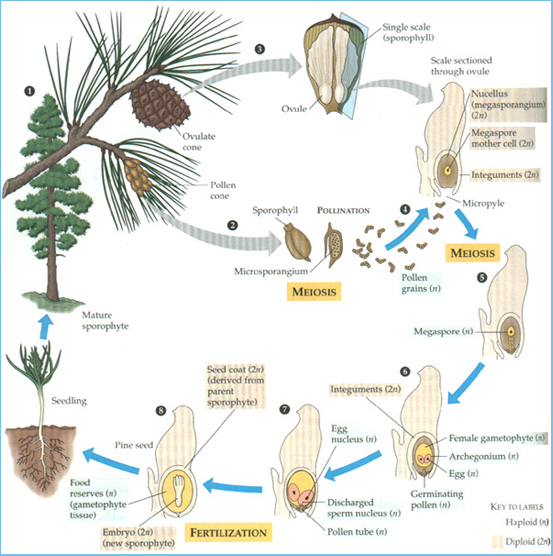I N T R O D U C T I O N
The life cycle of a pine

1 Trees (sporophytes) of most species bear both pollen cones and ovulate cones. 2 A pollen cone contains hundreds of microsporangia held in small reproductive leaves, or sporophylls. Cells in the microsporangia undergo meiosis, giving rise to haploid microspores that develop into pollen grains (immature male gametophytes). 3 An ovulate cone consists of many scales, each a sporophyll with two ovules. Each ovule includes a megasporangium, called the nucellus, enclosed in protective integuments with a single opening, the micropyle. 4 During pollination, windblown pollen falls on the ovulate cone and is drawn into the ovule through the micropyle. The pollen grain germinates in the ovule, forming a pollen tube that begins to digest its way through the nucellus. fertilization occurs more than a year after pollination. During that year, 5 a megaspore mother cell in the nucellus undergoes meiosis to produce four haploid cells. One of these cells survives as a megaspore, which grows and divides repeatedly, giving rise to the immature female gametophyte. Notice that the gametophyte develops within the wall of the spore. 6 Two or three archegonia, each with an egg, then develop within the gametophyte (Campbell et al, 1999).
|
|
|